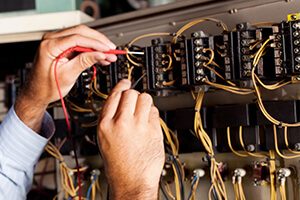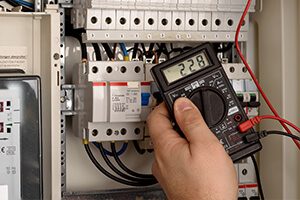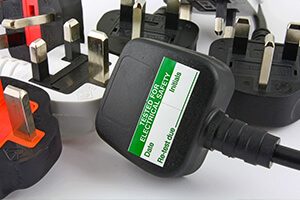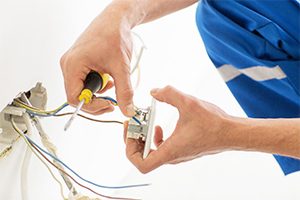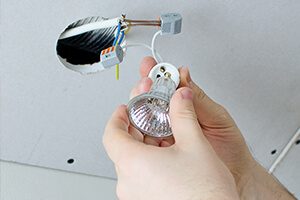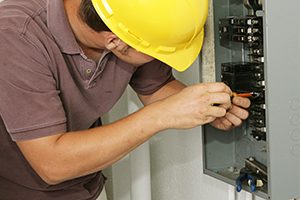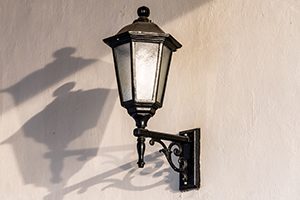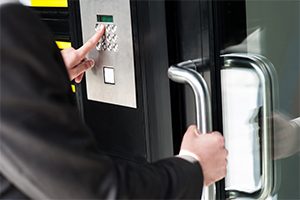Call or complete our online form to arrange a FREE no obligation quotation from one of our heating sales advisors. Call on 01273 723600
Electrics On-Tap: Electricians Brighton, East Sussex
Electrics On-Tap is Brighton and Hove’s leading domestic electrical services company providing electrical installation, testing and repair services to homeowners, tenants, letting agents and landlords. As part of On Tap Property Services Limited, our customers know that the unsurpassed quality of our work is due to the highly professional work ethic of our staff.
Electrical Services / Client Feedback
No job is too small, and, as the feedback on our site shows, Electrics On-Tap customers know that they can rely on us to provide reasonably priced, high quality work that complies with all the latest industry standards regarding electrical safety. The high rating awarded to us by checkatrade.com, the independent ‘rogue traders’ watchdog, confirms that our reputation for quality and professionalism is well deserved.
Greater Brighton & Hove Area
No job is too small, and, as the feedback on our site shows, Electrics On-Tap customers know that they can rely on us to provide reasonably priced, high quality work that complies with all the latest industry standards regarding electrical safety. The high rating awarded to us by checkatrade.com, the independent ‘rogue traders’ watchdog, confirms that our reputation for quality and professionalism is well deserved.
Book a Brighton based Electrician
If you’re based in or around Brighton and Hove and would like advice or information on any electrical work that you’re considering having done, however small, just give us a call. We’ll be happy to advise you and can provide you with a free estimate for any work. Our friendly and helpful staff are standing by to direct our Electricians to your door or to help you set up a future appointment 24 hours a day, 7 days a week.
Electricians Brighton FAQ
Electricity is an integral aspect of our everyday lives. So much so, we are surrounded at home and in our workplaces by various electrical systems. However, these systems can be particularly dangerous, making it essential to engage the services of a fully licensed and insured electrician to safeguard ourselves from the dangers of any electrical mishaps. The following are some of the most common situations where it’s necessary to call on the services of a qualified electrician.
- If the same fuses keep blowing or you have circuit breakers that frequently trip – and you’ve taken the basic steps of replacing and checking them, but still can’t resolve the problem – it might be might be time to call in an electrician. In fact, continually resetting circuit breakers and replacing fuses won’t effectively deal with the problem, as this will only cause your electrical system to continue attempting to draw more current than it can safely feed. In both these scenarios, it’s safe to assume that there is a potentially harmful problem within one or more of the circuits that can only be safely dealt with by a qualified electrician.
- If your home consists of crisscrossing and haphazardly dangling wires that trail across the room, this could be an indication that your electrical system is in urgent need of a minor or major overhaul – the severity of which can be determined by an electrical expert. Badly installed electrical systems pose a major risk and you should have your electrician install a new set of power outlets that are better placed.
- Another sign that your electrical system is outdated and needs to be upgraded is when you have too many of your modern devices and plugs that don’t fit into the power sockets in your home. In this case, it’s entirely possible that your electrical system is not properly or sufficiently grounded; therefore, you should get in touch with an experienced electrician in order to avoid any mishaps that could result from this.
- Any power outlet, switch, or other electrical surface that gives off heat and/or delivers mild to heavier doses of electric shock should be considered an indication of problems with the system. The best possible scenario is an excess demand of power on the circuit, but this can also mean something more sinister might be brewing in your electrical system. A qualified electrician can pinpoint where the problem is coming from and make the necessary repairs or replacements.
- If the lights in your home suddenly dim or flicker because you plugged in a specific appliance, said appliance might need its own dedicated circuit specially installed. A significant number of devices that run with motors (such as microwave ovens, refrigerators and fans) often draw large amounts of current, causing strain to your electrical system. A skilled electrician can help diagnose the problem and implement a viable solution.
It is strongly advised to work with an expert electrician when you need your phone sockets changing. This way, you can avoid any unnecessary damage to your property or other complications. Also, by working with professionals such as ourselves, you’re guaranteed not just quality, but also lasting results. Only the very best materials will be used in the execution of the project and tests will be performed on the spot to confirm the job is completed to perfection.
Furthermore, a qualified electrician will understand the unique features of the UK phone system and how it works and will in turn know the most appropriate components and materials to use. As part of the phone socket changing service, our electricians can also make sure the new telephone point is flush with the wall and that the wiring is chased in and neatly plastered over.
It is illegal for an electrician to remove a main fuse when they have not been authorised to do so. Any electrician who pulls a fuse they’re not authorised to puts themselves at risk of being fined.
Removing the main fuse can be dangerous for a person’s health and safety. Also, Distribution Network operators (DNOs) are often concerned about people who attemptto steal electricity via a fuse. Even when an electrician needs to remove the main fuse to ensure a safe working environment, they might still be reprimanded for doing so.
Depending on the DNO, your electrician might be able to pull the fuse if they work with a company that is trusted enough to acquire temporary seals from the DNO. Some DNOs will also allow any registered electrician to pull a fuse. So, before you do anything, it’s always a good idea to confirm with your DNO what their policies are exactly.
If an electrician has the authority to pull a fuse, then they’d be required to take a number of safety precautions. In most cases, when it’s out, the live parts will be in the open, with no barrier between them and the substation transformer. It’s subsequently possible for there to be enough energy to light up the service cable and cause a fire.
Stuck fuses can also be a problem and are particularly dangerous. If the electrician pulls too forcefully, they could end up pulling the holder of the board – particularly if damp has weakened it. This could result in some loose live wire, which is hazardous.
An electrician would also need to be very careful with old cut-outs that might contain asbestos wool. If they happen to encounter anything like this, the only choice would be to contact a DNO to change it. When the DNO sets out to remove a fuse, they will usually be armed with apparel made of cotton, a face shield and gloves for protection. Any electrician authorised to undertake this should also take such precautions.
In essence, if your electrician doesn’t have the authorisation to remove the main fuse, we suggest they don’t risk it. In addition to being illegal, pulling the fuse can be extremely dangerous. In this case, the best option is to call the DNO.
While it’s true that many electricians will take the risk and potentially blame it on the DNOs being disorganised, it’s best to contact the DNO first. If you’re lucky, they could solve the problem without too much of a delay.
Unfortunately, some electricians put themselves in unnecessarily dangerous situations when attempting to pull the fuse. For instance, changing CCU whilst live and adding switches, even when the main 100-amp fuse remains in position. As tempting as it might be to let your electrician pull the fuse, it’s better to be safe than sorry. So, speak to the DNO about what can be done to solve your electrical issues.
The first step to hooking up cable in a new home is to engage the services of a licensed electrician. Some cable companies might offer outlet installation services, or you may be considering trying to set up the outlets yourself, butthat job is best left to a capable electrician. Here is an outline of the reasons why it’s prudent to hire a licensed electrician to install a cable outlet.
- The right tools for the job
There are several specialised tools required to properly install a cable outlet, including drills, connectors, wall plates, cables, fittings, electrical boxes, screws and screwdrivers. These are just some of the tools that may be required and it’s unlikely a layman would have them lying around. However, a qualified electrician will come prepared for the task at hand and be equipped with all the required knowledge as to what the job requires and in what quantities.
- Damage to property
This is just a guess, but you’llalmost certainly want the installation to be completed with minimal damage to your building. Considering that the installation will likely require parts of your wall to be cut through and drilled,you shouldn’t expect an amateur to do as neat a job with installing your outlet as an experienced electrician.
- A job well done
With a professional electrician performing the installation, you can be certain it will be undertaken with care and diligence. You won’t have to worry about the outlet developing faults and requiring repair or reinstallation for some time to come.
- A neat job
Only a competent electrician can accomplish the task without leaving your home a mess of surface wires hanging haphazardly, instead of running them through the insides of that building’s walls.Furthermore, they’ll clean up after themselves when the job is complete.
- Putting safety first
Dealing with electricity always comes with its own unique risks that are best dealt with by a fully qualified electrician.Inexperienced DIY enthusiasts could easily make safety mistakes like cutting wires too short; leaving cables exposed and unshielded; not grounding properly; or making connections outside electrical boxes. Any such errors can often lead to short circuits or in the worst cases, an outbreak of fire.
- The law
In the UK, you are only permitted to undertakeminor electrical works yourself; even then, you will need to have them signed off by a building manager and a qualified electrician. After this, the installation will be subject to an inspection. If it fails this inspection, you could end up facing rather hefty fines. If you must go tothese lengths, it might be best to simply allowa professional to handle the installation.
It’s highly recommended to work with a registered electrician if you need any electrical work completing in your home or workplace. A registered electrician will likely carry out any electrical installation or repair work, whilst giving due consideration to the necessary safety requirements.
You can also expect that the work will be in line with BS 7671 requirements for electrical installations, which is the national standard across the UK. It wouldn’t be necessary for you to have any direct dealings with Building Control. Also, when the electrician has completed the work, they should give you the following certificates:
- A Building Regulations Compliance Certificate, confirming that the work they’ve completed is in line with the building regulations.
- A Minor Electrical Installation Works Certificate (where applicable) or an Electrical Installation Certificate, confirming that what they have done is in line with BS 7671.
You can access a formal complaint procedure if the electrical work completed by the registered electrician does not comply with Building Regulations requirements. You also have the choice to take out an insurance-covered guarantee when the electrician in question undertakes the work. Afterwards, you can make a claim if it’s discovered the electrical work is unsatisfactory and does not comply with Building Regulations.
For every periodic testing, inspection and electrical installation that’s completed, be sure to obtainall the relevant paperwork. Every report and certificate must include the test results and schedules of each inspection.
There are several types of electrical certifications available; that which you’ll receive depends on the type and extent of electrical work, testing or inspection that’s been undertaken. The electrical certification which could be issued include Minor Electrical Installation Works Certificates (MEIWCs) and Electrical Installation Certificates (EICs). These certifications are essentially declarations that the new addition, alteration or installation is safe for use, as at the time the report was made.
It’s essential to hold on to these certificates, because they serve as a basis for future testing and inspections. They can also help you avoid exploratory workat a later date, which can easily become costly. Also, if a third-party ever makes a claim, stating an electrical installation caused an injury or fire, the certificates can be used as documentary evidence to prove that the installation wascompleted to satisfactory levels of safety.
An EIC will indicate whether the electrical job in question is an alteration, an addition or a new installation. Alterations apply where there has been an extension or modification of existing circuits; for instance, if new sockets have been added. Additions apply when one or more new circuits have been added to an existing installation. Meanwhile, new installations refer to entire installations that have been installed as new or when a complete rewiring has taken place.
It’s advised that you only use a registered electrical contractor who can provide the appropriate certification for the work they complete. Always confirm with an electrician that they are NICEIC registered and will issue a certificate.
As long as you use electricity in your home or at work, chances are you have needed the services of an electrician at one time or another. Electricians are known to handle various electrical related tasks, from little details like changing a blown fuse to elaborate designs and installations.
An electrician will typically know how to install and maintain all or parts of the electrical systems in the house, office or large commercial properties. Some really skilled electricians can also handle basic repairs of electrical appliances but this is not usually part of their job description. The job of an electrician basically entails installing and maintaining the wiring system and equipment that control the flow of electricity in the property as well as any other component necessary for the electrical system to work optimally. Electricians with advanced skills and experience can also install and maintain electrical machines and equipment in factories and large commercial structures.
There are electricians who focus on design and installation and there are those who focus on repair and maintenance, although there are many who can do both. In the UK, the skills and qualifications of electricians are broadly grouped into three categories. Level 1 electricians are those who carry out some of the basic electrical works in the industry, but when it comes to advanced installation and repairs, a level 2 electrician will be best suited for the job. Level 3 electricians are more concerned with the design, customization and installation of advanced electrical services although they can easily handle any electrical related task.
Regardless of the size or nature of the electrical work to be done, it is recommended that you work with an electrician who is a member of any of the electrical regulatory bodies in the UK, such as ELECSA or NICEIC. As a rule, every electrical work must meet the British standard for safety and quality. At the end of the electrical work, only a qualified and registered electrician will be able to issue the relevant certificate to show that the work was done in accordance with the approved standard.
A qualified electrician will start the work at hand by first taking a look at the existing blueprint or technical diagrams to understand the layout of the existing electrical systems. In the event of a brand new installation, the electrician will create a blueprint that can be followed for subsequent repairs or modifications.
It goes without saying that you should always use a qualified and registered electrician for any electrical work you have regardless of the size or type of work. You can always get a qualified electrician by using the competent persons register. Even so, always ask to see their license so that you don’t end up working with someone with an expired license or someone who is not qualified and registered. It is also a good idea to request for a copy of their insurance document. This will help you know their level of coverage both for your property and for the electrician in the event of an accident.
Portable Appliance Testing, more commonly known as PAT testing, is the series of examinations done on electrical equipment to determine if it is safe to use. PAT testing usually entails a visual test and thorough further testing carried out by a competent electrician.
Even though PAT testing is not compulsory under the law, it is important you do it to satisfy the Electrical Work Regulations requirements which stipulate that all electrical systems and appliances are kept in perfect order to prevent danger. PAT testing is the easiest way to satisfy the necessary regulations and so it is very important that all businesses carry out PAT testing on a regular basis. At the end of the tests, appliances that pass are marked with a green label and the tester will offer solutions on how to go about fixing the appliances that don’t meet the accepted standards.
Dozens of factors affect the cost of PAT testing. For one thing, the location where the equipment to be tested is may contribute to the cost of overall PAT testing. Additionally, while some appliances demonstrate defects during visual inspection, others may require detailed inspection using specialised PAT testing equipment.
As fair pricing goes, there is no specific rule that says how much PAT testing should cost. Different PAT testing specialists have different ideas of what is a fair price and they have their reasons for setting the price they choose. In some cases, these reasons include extra expenses incurred such as transportation costs to the point of testing, reporting and label materials. However, as a rule, PAT testing specialists usually charge between £1 and £3 for each appliance. But, if you have lots of appliances to test, you will likely get a discount for bulk testing.
You have to understand that PAT testing involves a lot more than just testing the appliances; while some firms only carry out the PAT testing and submit a result; others go the extra mile by carrying out basic repairs like rewiring, fuse replacement and a complete visual inspection. Additionally, a certificate will be issued to show that the establishment is in compliance with the relevant regulations and that the work environment is a safe place to work in.
Some PAT testing firms may actually charge less than the minimum £1 but these firms usually have a minimum number of appliances that you have to test, or a minimum fee, in order to qualify for this pricing system.
PAT testing is an essential process put in place by the health and safety regulations board to ensure the safety of homes and workplaces, therefore, while cost should be a consideration, it should not be your main influencing factor. It is your responsibility as a landlord or business owner to ensure that all the electrical appliances in your premises are safe for use. In the event of an electrical accident, such as an electric shock or electric fire that occurs as a result of faulty electrical equipment, you are liable to face legal prosecution by the Health and Safety Executive.
PAT is an acronym for Portable Appliance Testing. It is a process which involves testing all electrical appliances,which can be moved, to ensure that they can be used safely. During PAT testing, appliances like vacuum cleaners, fridges, dishwashers, washing machines, microwaves and all other similar appliances are checked thoroughly for proper function. Cables and plugs around the appliances are checked and they are also checked for insulation and grounding. The tests are done within the building.
How often you should get an electrical check will depend on how old your house is and the number of appliances it supports. Older houses may have an outdated electrical system which can’t support certain appliances and increasing loads.
A periodic inspection involves conducting checks and associated testing to see if the electrical components of a house are working optimally. After the required inspection and testing, an Electrical Installation Condition Report will be issued. The report shows any observed defects, damages, unsafe conditions, and any non-compliance with current safety standards that could lead to danger.
It is often recommended to get an electrical check every 3-5years. You also need to update your electrical system, when necessary,to keep up with recent safety standards, even if you have a relatively new house.
To maintain adequate safety standards, periodic testing and inspection should be carried out as follows:
- Every 5 years, at least, for businesses
- Every 5 years, or during every change of occupancy, for tenanted properties
- Every 10 years, at least, for private homes
You will know that your electrical system is inadequate when you start experiencing any of the following:
- Fuses constantly blowing
- Outlets and switches no longer working properly
- Tripping circuit breakers
- Your electrical outlets are two pronged instead of three pronged
- Lights flicker when an air conditioner, heater, or some other appliance is turned on
Regular checks should be carried out around the house to monitor the condition of sockets, switches, cables, and other accessories. Once anything unusual is noticed, such as circuit breakers tripping or fuses blowing, crackling or buzzing, or burn marks on sockets and plugs, a registered electrician should be contacted to conduct an electrical check immediately.
Various factors can lead to the wear and tear of electrical installations, including how the property has been used and the materials that the installations are made of.
When an electrical check is done and it is discovered that a rewiring is needed, it is recommended to remove redundant wiring. To avoid any risks, all redundant wiring must be disconnected permanently from any electrical supply if it is not possible to have it removed. There are no set rules as to when a property should be rewired. Rewiring should not be done just because the wiring of a house is old. As long as it meets safety conditions and is in good shape.
According to the 1985 Landlords and Tenant Act, electrical wiring should be kept in proper working order by landlords who have properties with short leases. It is recommended that, at the relevant intervals as shown above, landlords should arrange for periodic inspections and testing by a registered electrician.
For caravans and swimming pools, there should be more frequent periodic electrical inspection and testing as follows:
- Every 1 year for swimming pools
- Every 3 years for caravans
To ensure that electrical appliances and equipment are in good condition, safe to use,and will not cause injury,they are examined periodically according to the Electricity at Work Regulations 1989. This is referred to as PAT testing (Portable Appliance Testing). PAT testing law requires that landlords, employers, and the self-employed should ensure that their portable electrical appliances are only used for the purposes they are meant for and that they are safe and suitable for the job at hand.
To ensure preventative maintenance, the Health and Safety Executive state that PAT testing should be done regularly. However, there are no set rules on how frequently this is. The reason why there are no set rules is because a variety of situations that require a variety of measures could potentially happen. It is left toeach individual to determine when to carry out PAT testing, since there are a number of factors that affect the testing frequency.
Most types of electrical safety defects can be detected by visual examination while some can only be detected by testing. Regardless, visual examination is a key component of fault detection since most faults may not be detected by testing alone.
There are a few different factors to considerto determine how often to test your appliances:
- A major factor in determining the frequency of PAT testing is the type of equipment in question. Appliances that are stationary are less likely to become damaged than appliances that are hand held. Class 1 appliances should be tested more often since they pose the greatest risk of danger.
- Equipment that is less frequently used may suffer less damage than that being used regularly. Therefore, frequently-used equipment and appliances should be tested more often.
- There is a lowerrisk for a major hazard to happen when people immediately report any noticeable damage. If it happens that people tend not to report damage once it becomes noticeable, and that equipment is handled with little care, then testing and inspections should be done more frequently.
There are recommendations for PAT testing frequency although there are no set rules:
- Industrial equipment testing: commercial kitchens included, portable and handheld equipment testing should be done every 6months on all industrial sites. Stationary, moveable, and IT equipment should be tested every 12 months.
- Hotels, shops, and offices: testing should be done every 48months for class 1 equipment, including IT and stationary equipment. Handheld equipment should be tested every 12months. Portable equipment and moveable equipment should be tested every 24months.
- Public use equipment: portable, moveable, and handheld equipment that is under Class 2 should be tested every 12months. Those under Class 1 should be tested every 6months. Stationary and IT equipment, such as computers, should be tested every 12 months.
- School: Class 2 equipment should be PAT tested every 48months, while Class 1 equipment should be tested every 12months.
- Construction: there should be a PAT testing every 3months for all 110V equipment on construction sites.
According to updated UK laws, PAT Testing is not mandatory for landlords. However, while there is generally no legal requirement, there are still exceptions. A live-in care worker, for example, taking care of someone in your rented apartment means you are mandated to carry out PAT testing.
However, the fact that you are not required to carry out PAT testing legally doesn’t absolve you of the responsibility to ensure that all the electrical equipment in your apartment is safe to use. You are also expected to keep this equipment safe for as long as your tenants are living in the property. How you choose to do this is up to you. Whilst some landlords choose to pay for professional PAT tests, you can elect to go the DIY route if you wish to.
Having a PAT test done by a qualified professional gives you the protection you need in the event of a legal case comingas a result of an electrical appliance malfunction.
If you’ve ever had electrical work done in your home or office, you were probably issued with a BS7671 certificate. This is usually issued at the completion of an electrical design, installation or repair project to show that the job was carried out in accordance to the relevant safety requirements and meets the accepted health and safety standard.
In January 2005, a law was passed whereby all work on electrical installations in homes, offices and commercial buildings across Britain would be required to comply with a particular standard. In the UK, this standard is the BS7671 requirements for electrical installations; it was put in place to serve as a guideline for electrical installations and to protect against shoddy workmanship or the use of substandard materials.
The BS7671 electrical safety certificate is usually given to the home or business owner at the end of a new electrical installation or after the completion of repairs to an existing electrical system. This certificate shows that the electrical installation was carried out by a qualified electrician and was inspected and tested in accordance with the BS7671 guidelines, which relate to the IEEE wiring regulations. The certificate is proof that the job meets the approved standard – be it a new design, installation, modification or alteration. First time wiring, rewiring, installation of new circuits, additions to existing circuits and any other electrical installation or modification in different areas of the property all fall under the type of electrical work that qualifies for a BS7671 certificate.
It is your responsibility to ensure any electrical project completed in your home or office is carried out by a qualified electrician. Only such an individual will be able to give you the quality of work that qualifies for a BS7671 certificate.
Apart from demonstrating compliance with Health and Safety regulations, a BS7671 certificate also provides other benefits to the property owner. For instance, should you decide to sell your property in future, you’ll need to provide a current BS7671 certificate, otherwise you may have a hard time selling the property. Additionally, not having an up-to-date BS7671 certificate will jeopardise your insurance cover in the event of an electrical accident on your premises. You may even face legal prosecution for putting the lives of people at risk by using unqualified electrical contractors for your electrical projects.
As long as you have a valid BS7671 certificate, you have the right to make a formal complaint to any of the relevant electrical regulatory bodies if you find out that the work completed is not up to standard. Some of the relevant bodies include: NAPIT, NICEIC and ELECSA. You can also use this certificate to take an ‘insurance back guarantee’, which gives you the right to make a claim if you discover the electrical work was not completed in accordance with the current building and safety regulations.
It’s vital that you use a qualified electrician for any electrical project and ask them for a BS7671 certificate on the completion of the work.
Information About Brighton
- Electrics On Tap offers electrical services in Brighton, East Sussex, a large town located in South East England.
- Brighton, Sussex is a part of the Unitary Authority of the City of Brighton and Hove which forms part of the greater Brighton and Hove built-up area.
- A large number of leading businesses make Brighton and East Sussex their home including Electrics On Tap.
- Brighton was previously named Brighthelmstone.
- The nicknames Brighthelmstone & Blightey are still commonly used.
- Brighton contains a number of settlements and villages including Hangleton, Aldrington, Black Rock, Bevendean, Coldean, Brunswick, and Old Steine.
- Hove, Mile Oak, Moulsecoomb, Hollingbury and Hollingdean are included withinin Electrics On Tap’s Electrician area in the City of Brighton and Hove.
- Other service areas of Electrics On Tap within in Brighton, Sussex accommodate Portslade-by-Sea, Saltdean, Ovingdean, Patcham and Rottingdean,
- As well as Brighton and Hove’s outlying urban areas Woodingdean, Westdene, Withdean and West Blatchington.
- Last but not least Electrics On Tap’s electrical services cover the Brighton Municipality including Bear Road area, Brighton Marina and Stanmer.
- Brighton comes under the BN postcode area.
- The University of Brighton and Sussex University are prestigious through out the United Kingdom.
- Queen’s Park, Brighton and Preston Park, Brighton are popular with local residents and known through out England.
- Integral major roads in Brighton are the A27 road and the A23 road.
- To the West, the City of Brighton and Hove is bordered by Shoreham, Southwick, Littlehampton, Sompting, Lancing and Worthing.
- The City of Brighton is flanked to the East by Burgess Hill, Peacehaven and Lewes.


